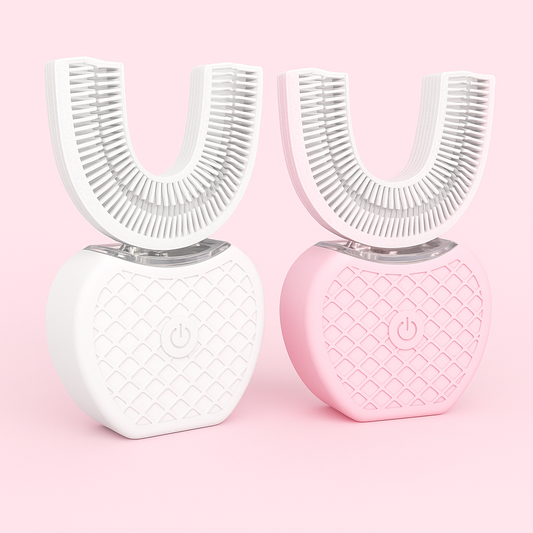Introduction
Fresh breath is one of the joys of bonding with your dog—whether during cuddles, playtime, or quiet moments together. However, bad breath (halitosis) is a common problem among dogs that can be unpleasant for owners and a warning sign of underlying health issues. In 2025, advances in veterinary science and pet care have made it easier than ever to tackle this problem effectively. This comprehensive guide covers the top 5 proven dog breath solutions that guarantee lasting freshness and improve your dog’s oral health.
From dental care basics to innovative products and dietary tips, these strategies will help you understand and combat doggy bad breath like a pro. Let’s dive deep into each solution for fresh, healthy breath your dog deserves.
1. Regular Veterinary Dental Check-Ups: The Foundation of Oral Health
Professional dental check-ups remain the gold standard for maintaining your dog’s oral hygiene. Unlike home care, veterinarians have the expertise and tools to clean below the gumline and treat oral diseases that cause bad breath.
Why Veterinary Dental Care is Essential
- Comprehensive Cleaning: Vets perform scaling and polishing to remove tartar and plaque buildup that at-home brushing can’t fully eliminate.
- Diagnosing Hidden Issues: Oral infections, tooth decay, gingivitis, and even oral tumors can be detected early before becoming serious problems.
- Preventing Systemic Illness: Untreated dental disease can spread bacteria to vital organs like the heart and kidneys, leading to life-threatening conditions.
Recommended Frequency
Most veterinarians advise dental check-ups and professional cleanings at least once a year. However, dogs with existing dental issues or certain breeds prone to oral disease may require more frequent visits.
What to Expect During a Veterinary Dental Visit
- Thorough oral examination including gums, teeth, tongue, and throat.
- Dental X-rays to evaluate tooth roots and jawbone.
- Scaling and polishing under anesthesia to ensure safety and thoroughness.
- Advice on at-home dental care tailored to your dog’s needs.
Investing in regular veterinary dental care is the most reliable way to maintain fresh breath and prevent oral disease progression.
2. Consistent Teeth Brushing: The Most Effective Daily Defense
Daily or frequent brushing of your dog’s teeth is the single most effective way to control plaque buildup and keep breath fresh between vet visits.
Getting Started with Brushing
Though brushing can be challenging at first, patience and consistency make it easier over time:
- Choose the Right Tools: Use a toothbrush designed for dogs, such as a finger brush or a small soft-bristled brush, paired with dog-specific toothpaste (never human toothpaste).
- Introduce Gradually: Start by letting your dog sniff and lick the toothpaste, then gently rub their teeth and gums with your finger before progressing to the brush.
- Make it Enjoyable: Reward your dog with praise or treats after each session to build positive associations.
Best Practices for Brushing
- Brush at least 3-4 times per week; daily brushing is ideal.
- Focus on the gumline where plaque accumulates.
- Be gentle to avoid causing discomfort or injury.
- Maintain a consistent routine—same time and place helps dogs adapt.
Benefits Beyond Fresh Breath
Regular brushing not only reduces bad breath but also prevents painful dental disease, reduces the risk of tooth loss, and supports your dog’s overall health.
3. Dental Chews and Treats: A Convenient, Enjoyable Solution
Dental chews and treats are a popular and effective way to supplement your dog’s oral care routine. They satisfy your dog’s natural chewing instinct while helping to mechanically remove plaque and freshen breath.
What to Look for in Dental Chews
- Veterinary Approval: Choose products recommended or approved by the Veterinary Oral Health Council (VOHC) or your veterinarian.
- Appropriate Size and Texture: Select chews suitable for your dog’s breed, age, and chewing habits to avoid choking or digestive issues.
- Natural Ingredients: Opt for treats free of artificial preservatives, colors, and harmful additives.
Popular Types of Dental Chews
- Rawhide Alternatives: Safer and more digestible options like compressed vegetable or rice-based chews.
- Dental Sticks and Bones: Specifically designed to scrape teeth clean as dogs chew.
- Enzymatic Chews: Contain enzymes that break down plaque and bacteria.
Regularly providing dental chews helps keep breath fresh and supports healthy teeth and gums, especially when combined with brushing and vet care.
4. Water Additives: Effortless Oral Hygiene Support
Water additives have gained popularity as an easy, no-fuss way to improve oral hygiene and combat bad breath in dogs. Simply added to your dog’s drinking water, these products work continuously to reduce bacteria and plaque.
Advantages of Water Additives
- Convenience: Ideal for dogs resistant to brushing or those with busy owners.
- Continuous Action: Constantly freshens breath throughout the day as your dog drinks.
- Safe and Non-Toxic: Most additives are formulated specifically for canine use with safe ingredients.
Choosing the Right Water Additive
- Ensure the product is veterinarian-approved and designed for dogs.
- Review ingredients to avoid allergens or irritants specific to your dog.
- Follow dosage instructions carefully to prevent digestive upset.
Water additives work best when combined with brushing and dental chews, forming a holistic approach to breath care.
5. Balanced Diet with Natural Teeth-Cleaning Foods
Your dog’s diet plays a pivotal role in oral health. Certain crunchy fruits and vegetables act as natural toothbrushes by scrubbing teeth surfaces and stimulating saliva production, which helps wash away bacteria.
Safe and Effective Natural Teeth-Cleaners
- Carrots: Low-calorie and crunchy, they help remove plaque and freshen breath.
- Apple Slices: Rich in fiber and vitamins; ensure seeds are removed to avoid toxicity.
- Cucumbers and Green Beans: Hydrating and crunchy options that support oral health.
Feeding Tips for Safety and Effectiveness
- Always cut fruits and vegetables into bite-sized pieces to prevent choking.
- Introduce new foods gradually to monitor for digestive tolerance.
- Consult your veterinarian before making significant diet changes.
Additionally, feeding a well-balanced, high-quality commercial or homemade diet supports overall health, which in turn promotes healthy gums and fresher breath.
Bonus Tips for Maintaining Fresh Breath in 2025
Incorporate Probiotics
Probiotics can improve your dog’s gut health, reducing bad breath caused by digestive imbalances. Look for canine-specific probiotic supplements and consult your vet on appropriate use.
Homemade Dental Solutions
Simple homemade rinses or gels made from dog-safe ingredients like diluted coconut oil or aloe vera can soothe gums and reduce bacteria. Always verify ingredient safety before use.
Hydration is Key
Adequate water intake helps flush food particles and bacteria, contributing to fresher breath.
Conclusion
Keeping your dog’s breath fresh in 2025 is achievable with a multi-faceted approach that combines professional care, daily maintenance, proper diet, and smart supplementation. The top 5 proven solutions—regular veterinary dental check-ups, consistent teeth brushing, dental chews, water additives, and a balanced diet rich in natural teeth-cleaning foods—work synergistically to ensure lasting freshness and optimal oral health.
By investing time and care in your dog’s oral hygiene, you not only improve their breath but also enhance their overall quality of life and longevity. Start implementing these strategies today to enjoy closer, more pleasant moments with your beloved canine companion, free from the worry of bad breath.
Remember, when in doubt, always consult your veterinarian to tailor an oral care plan specific to your dog’s needs in 2025 and beyond.


